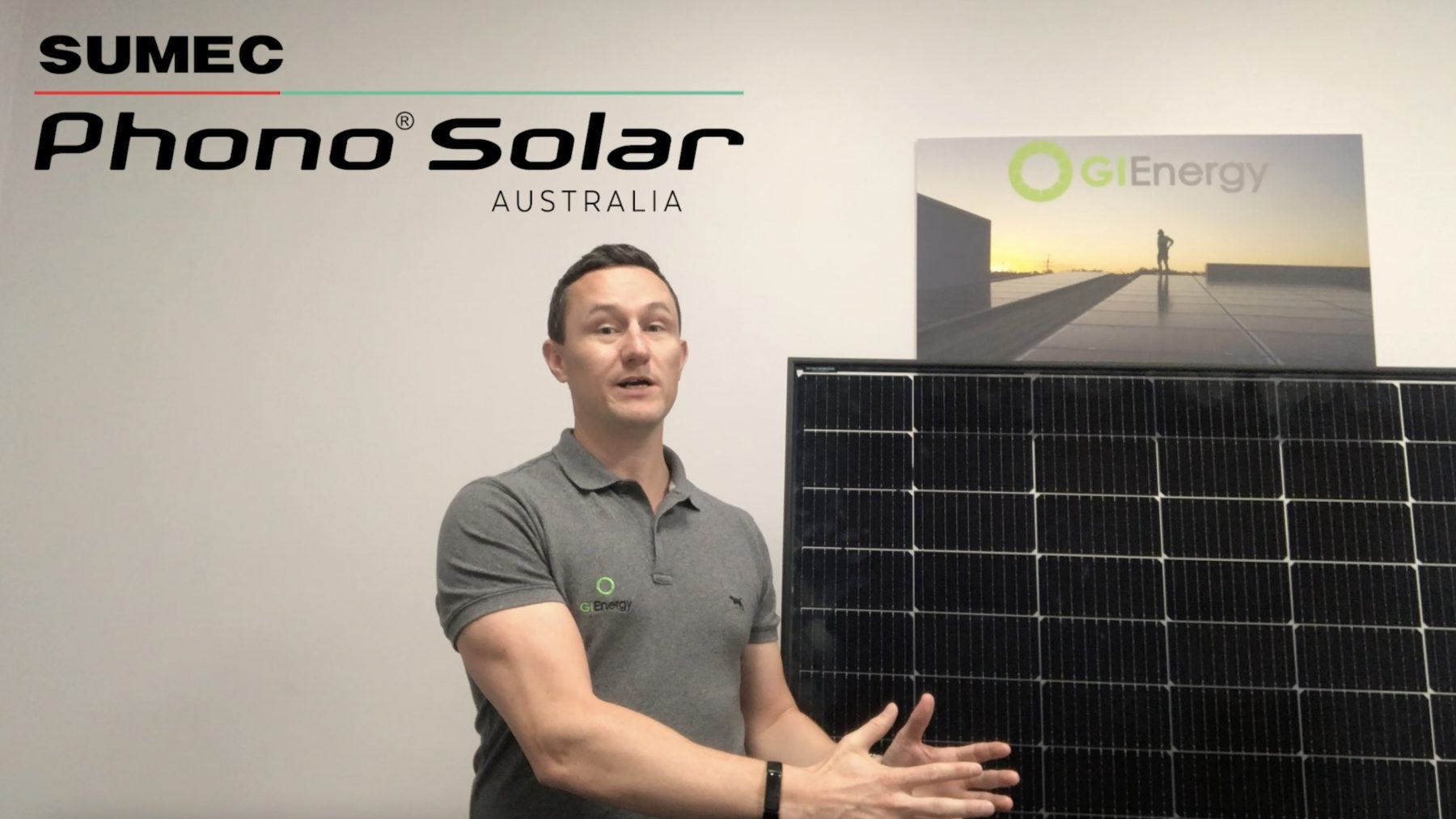Are Sumec Phono Solar Double Glass Panels Any Good?
Today I’m standing here in my office with the brand new 390-watt Sumec Phono Solar PS390M7GF-18/VH bifacial, or double glass solar panel.
These panels are not officially available yet in Australia, this one is a sample product here in our office. Containers are on the water, and we expect them to arrive in a few weeks. So, it’s a brand-new product. This article will cover exactly what we think of this new Phono Solar Double Glass Panel.
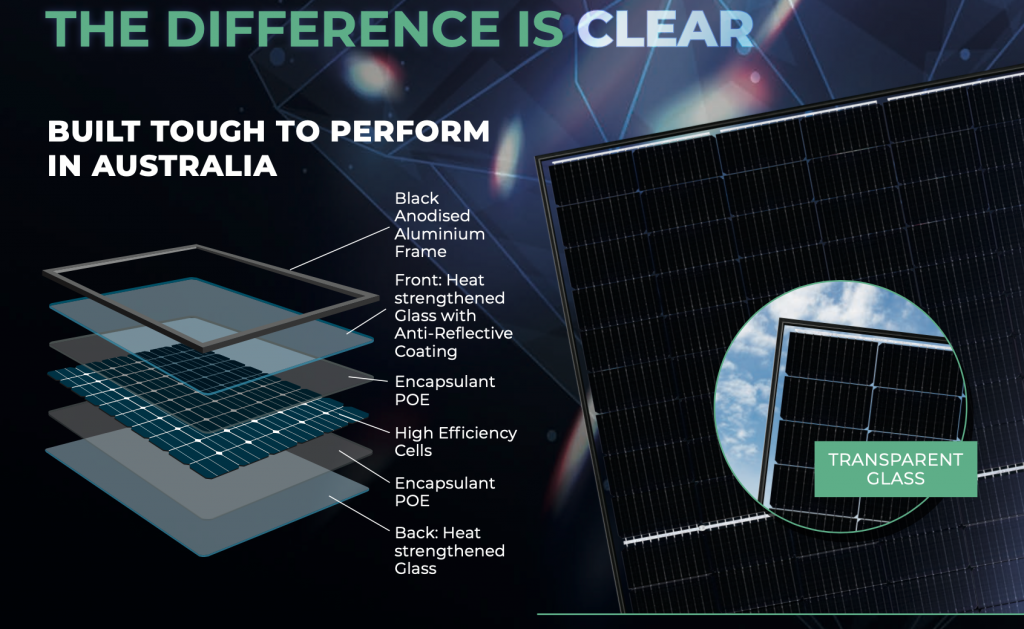
Before I get into that, I just want to do a quick recap on Sumec Phono Solar. For those who have had anything to do with GI Energy over the years, you’re probably aware that we’ve been installing Sumec Phono Solar panels now for close to a decade. They’re certainly not the only panel install and we have a very wide range of panels dependent on customer’s requirements and budgets.
That being said, they have been a mainstay for us over the years. And we really like the brand. So before going into the panel specifics Sumec Phono solar are part of a very, very large Fortune 500 Company, which to us is really, really important.
83% of solar panel manufacturers that were serving the Australian market eight years ago, are now longer either not in business at all, or no longer serve in the Australian market, which means that people that have purchased panels from one of those manufacturers are going to find it really, really difficult to get any warranty support.
Who are Sumec Phono Solar?
So, because Phono solar are part of a Fortune 500 company, they’re extremely diversified. So, they obviously manufacture solar panels. They also manufacture container ships, they have financial divisions, they’re the largest textile exporter in China, they manufacture parts for BMW and Mercedes cars. And the list just goes on and on and on. So that diversity basically means that if the solar industry is not doing so well in five or 10 years time, and you need to get a warranty looked after, there’s a very, very good chance that Sumec Phono solar are still going to be able to do that.
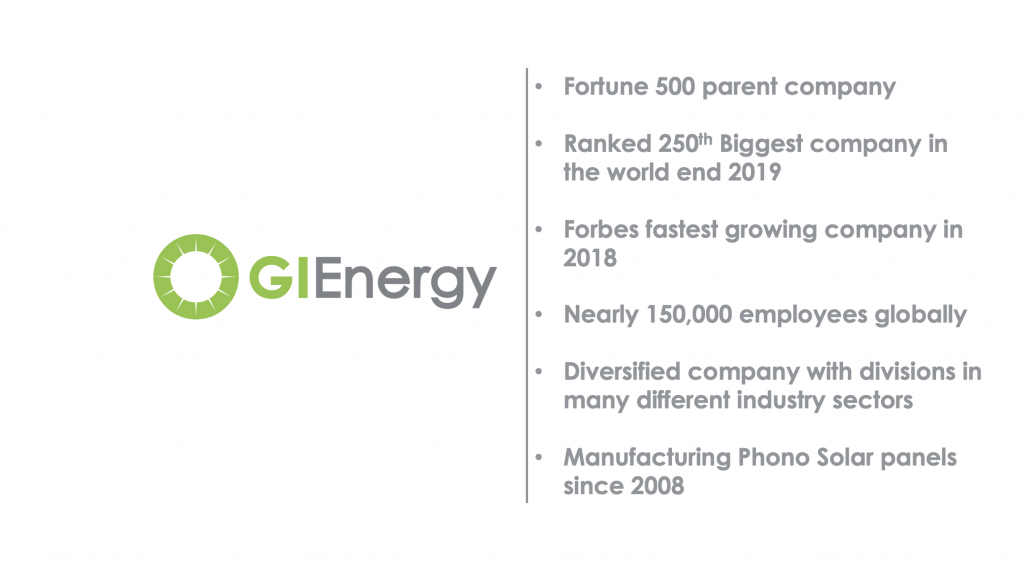
If you compare that to what we call “panel only manufacturers” who have very little or no diversity across their manufacturing divisions, it’s going to be a little bit more difficult for some of them survive if solar volume globally drops, and then potentially they join the other 83% and go out of business. Unfortunately, people that have purchased those panels, might not have the warranty support that they deserve and have paid for. There’s lots more information on Sumec Phono on our website.
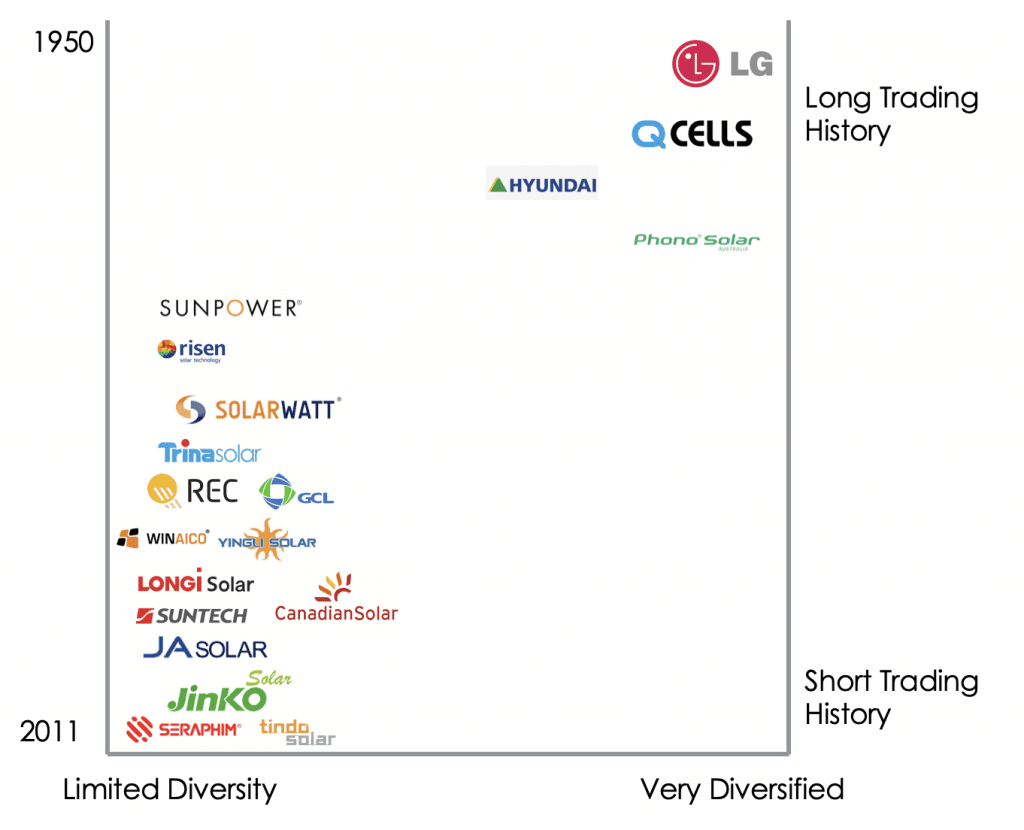
What about this Sumec Phono Solar Double Glass panel specifically?
But just to get into this panel specifically, as I mentioned before, it’s a 390-watt panel. And it’s a bifacial panel, which means that it has two sheets of glass, one sheet of glass on the front, solar cells in the middle and another sheet of glass on the back. So, what does that mean? And why is that important to you? And will that have any impact on your return on investment, or long-term reliability of the product?
First of all, with a bifacial panel being see through one of the benefits is that sunlight will travel through the panel or behind the panel and be able to reflect back up onto the rear of the cells, which will help improve performance.
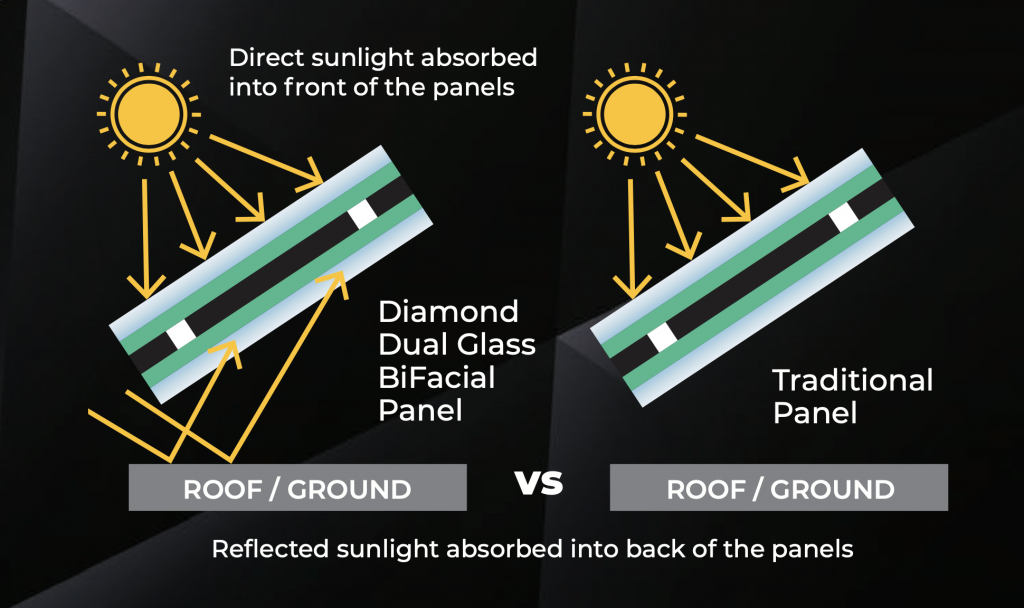
That performance can be improved marginally or fairly significantly, depending on your install. For example, if you had a flat roof, with a black or monument coloured Colourbond, and your panels were flush with that roof, then realistically, there’s probably not going to be a huge amount of improved performance, because the sunlight would only go through the cells on a very small level. Additionally, there wouldn’t be a huge amount of bounce back from that dark coloured roof.
On the other end of the scale, if you had a ground mounted system on a frame, with the panels off the ground, and a white gravel beneath as an example, there’s going to be a lot of reflection bouncing back up. And that’s where you’d see those really, really big performance increases.
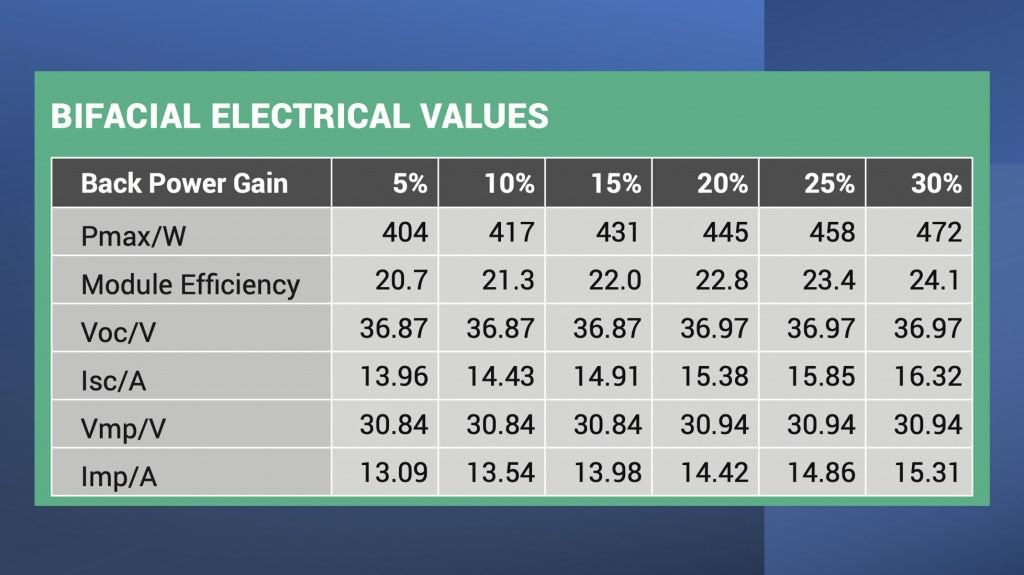
Other Advantages:
The other main advantage of a bifacial panel is that there is no back sheet used. This back sheet, particularly in climates like we have here in Australia, has been a very common point of failure due to UV penetration, which can sometimes mean that you can get vapor or water ingress into the panel, which can damage the cells and affect the performance of your whole system. The back sheet is one of the most common points of failure of a solar panel here in Australia. So that point of failure is no longer in this panel or any other bifacial panel.
This essentially then essentially means they’ve removed that point possible of failure altogether. So, the bifacial nature of the panel means that there could be some improved performance for you. Removing the back sheet means that the reliability long-term should be really, really good.

Warranties?
These factors are reflected in the warranty coverage that Sumec Phono Solar have given this panel. Traditionally, the 370-watt Phono solar panels that we’ve been installing for the last couple of years, have a 15 year product warranty, and a 25-year performance warranty. This new bifacial panel has a 20-year product warranty and a 30-year performance warranty.
I know from going to the factory personally and speaking to people at Phono Solar over the years, as well as the distributors here in Australia, that they take their warranties really, really seriously, which is why until now, with the older modules, they’ve kept it at that 15-year and 25-year mark, even though a lot of other manufacturers have written longer warranties with exactly the same product that they’ve had in the past. Even though nothing’s changed with the product, come other manufacturers have changed the warranty to meet market conditions and increased the product warranty up from the industry standard 15-years.
Sumec Phono Solar haven’t done that. But what they have done is improved the warranty specifically for this product, because they have a lot of faith that this product is going to be more reliable in the really long term. So that’s a huge benefit for any customers looking for a long-term investment from their solar panel.

Other things worth mentioning with this panel, it has a black frame. And with a see-through effect from the double glass, it actually looks pretty cool. I’m not sure how important that is to people. But if aesthetics of your solar installation is important to you, it’s actually a really cool looking panel.
The efficiency of the panel is just under just under 20% at 19.9%, which is quite impressive as well. And, if you did have some reflective properties from your roof or ground mount, that performance, can actually increase quite drastically.

Prices?
In terms of the price point, Phono Solar panels have always been just above the mid-price point mark. However, the performance has always been up there with a really premium panel. In fact, if you look at our last review of the previous Phono panel, you’ll see a case study there where we had a 6.3kW system that was producing 37% more power than it was expected to when compared to the solar simulation for that site.
That same system has now been installed for three years. When we revisited it today, just before doing this video, the performance after three years is almost exactly the same as it was when we did that first video. So, it’s still producing approx. 37% more energy than what the expected amount, three years after it was installed.
It’s worth mentioning that there’s lots of variables there to consider and the solar simulation report that we did was quite a basic one. You can do more sophisticated reports for sure. But I think that gives you a really good idea of how they perform in the real world.
I am sure that anybody in our industry would look at those numbers and be impressed at how they perform. Especially given the fact that the price point is just above that mid-price point, not right at the top of the premium end.
Now, this panel double glass panel being a newer panel, we expect it to produce more energy, and we’re really excited to start getting them on roofs. We have taken quite a few orders for them already. And they’re going to start getting installed in the next few weeks.
If you’d like to get in touch and you’d like to see how they are performing once they’ve been installed, we’re more than happy to share that data with you. And if you have any other questions at all, just get in touch and we’re more than happy to answer them as well.
Here are some links worth checking out:

